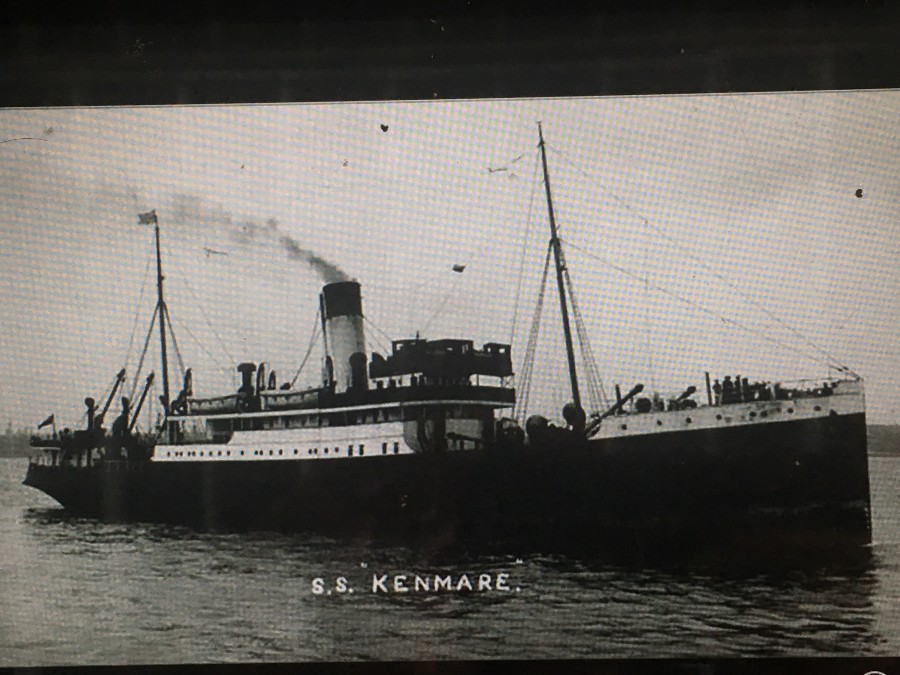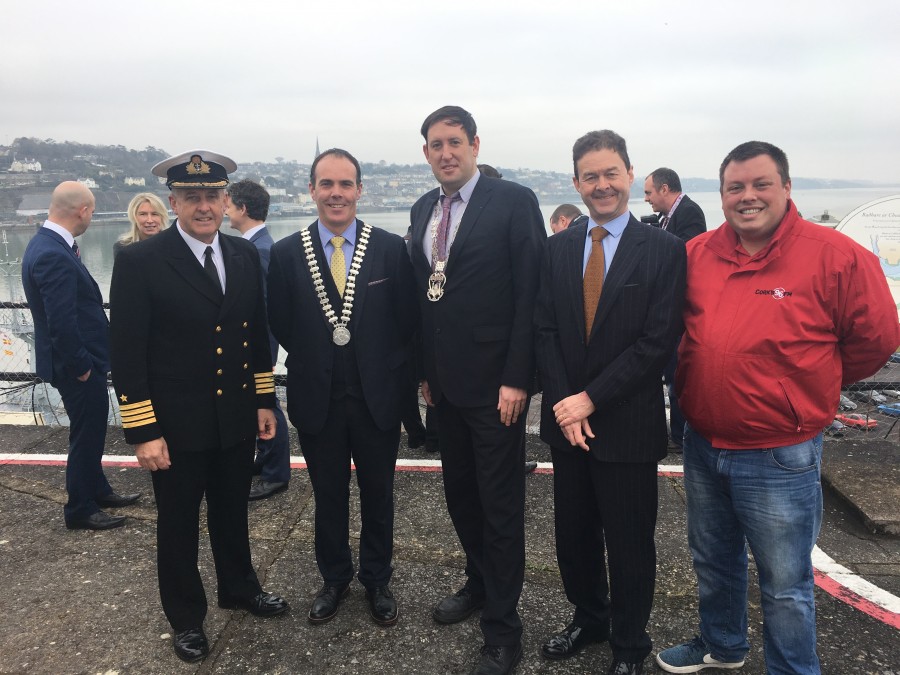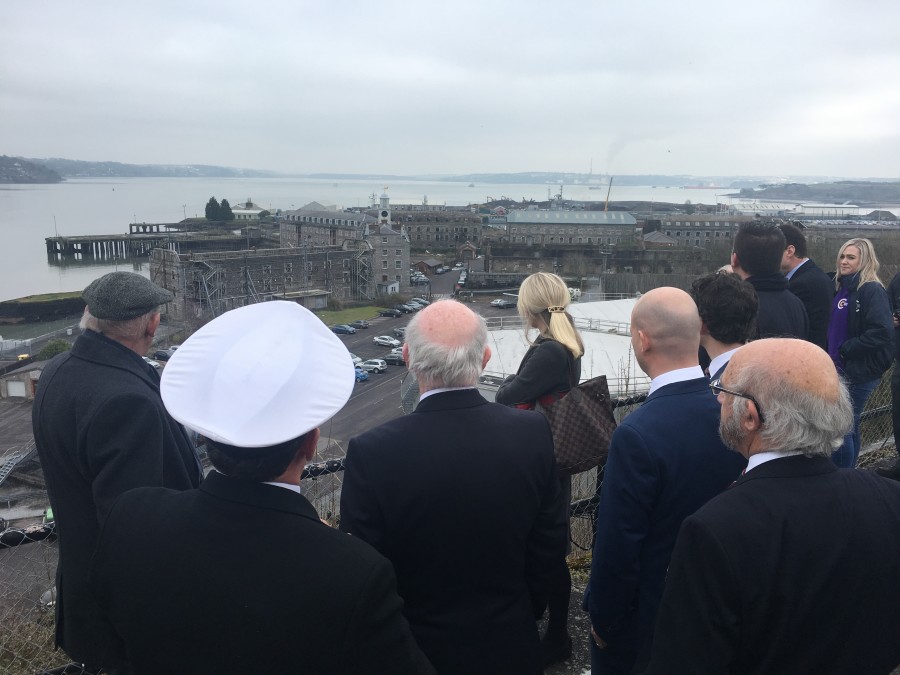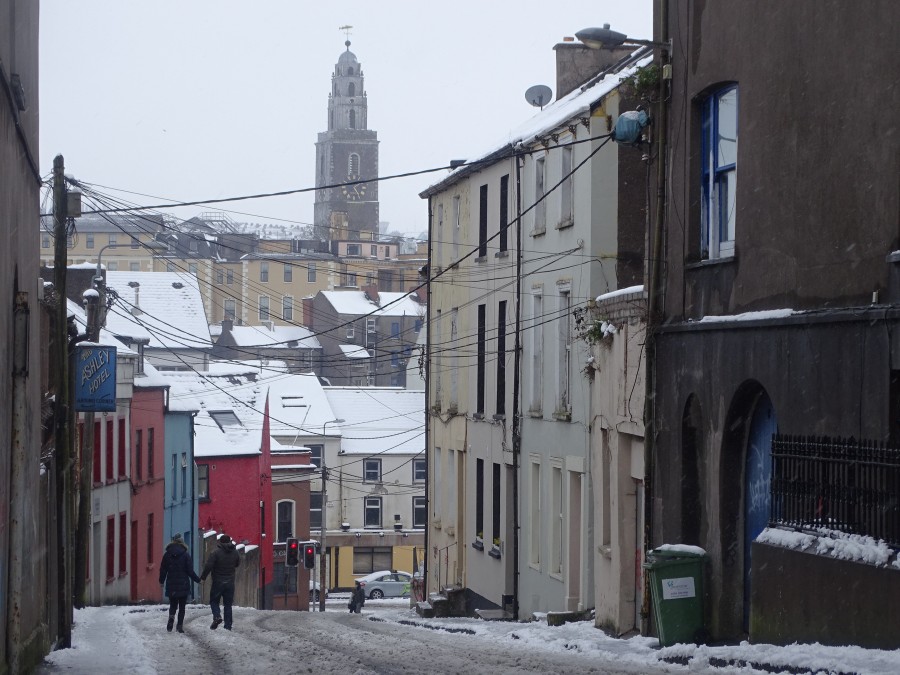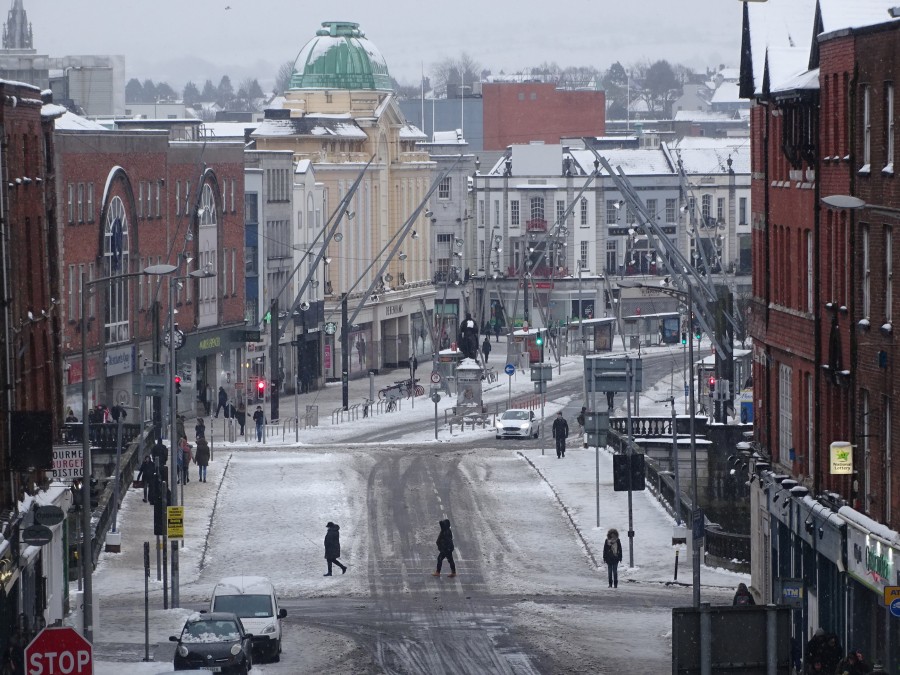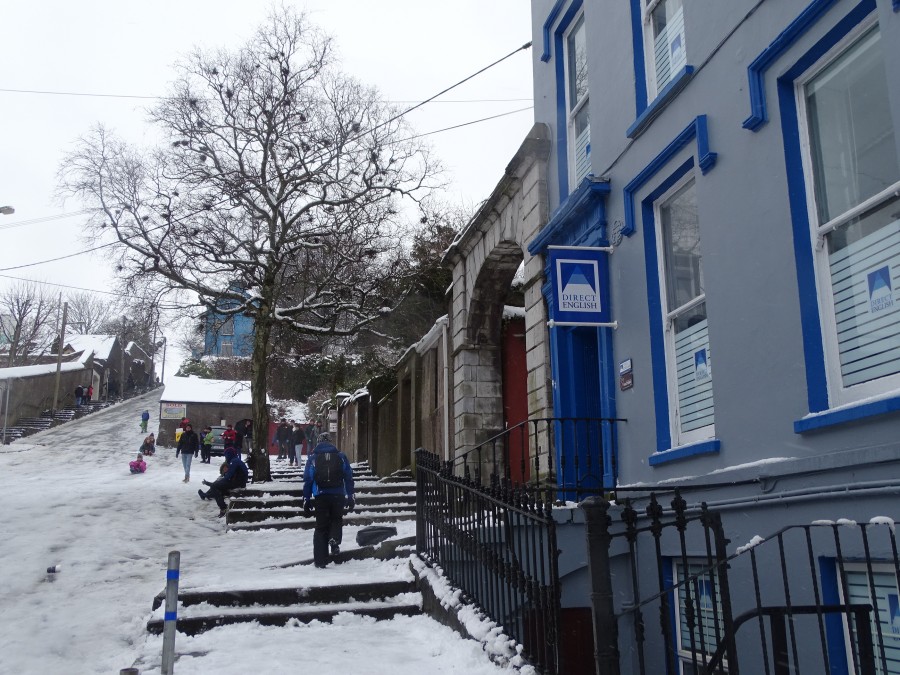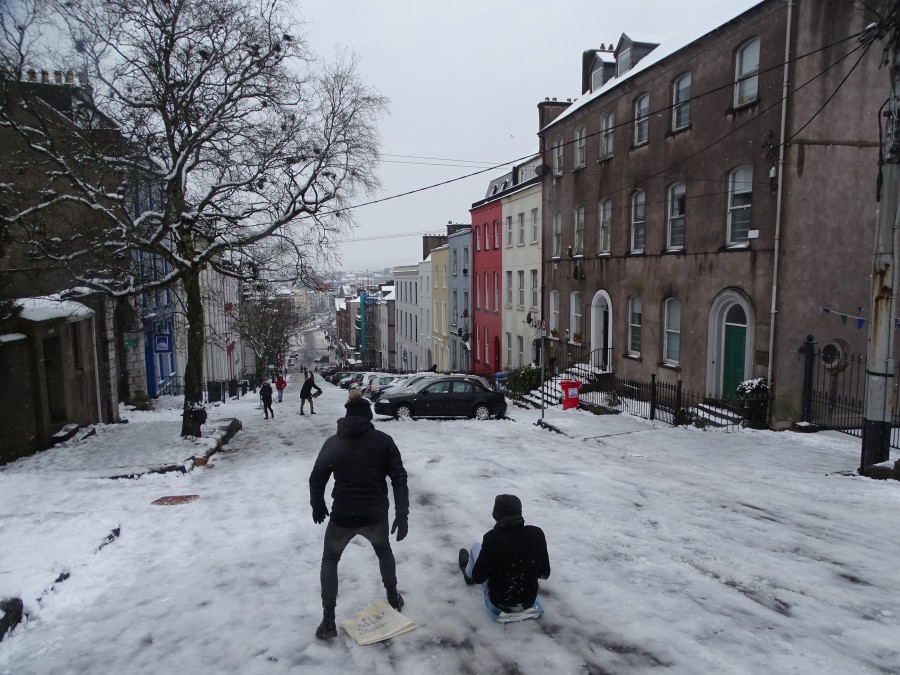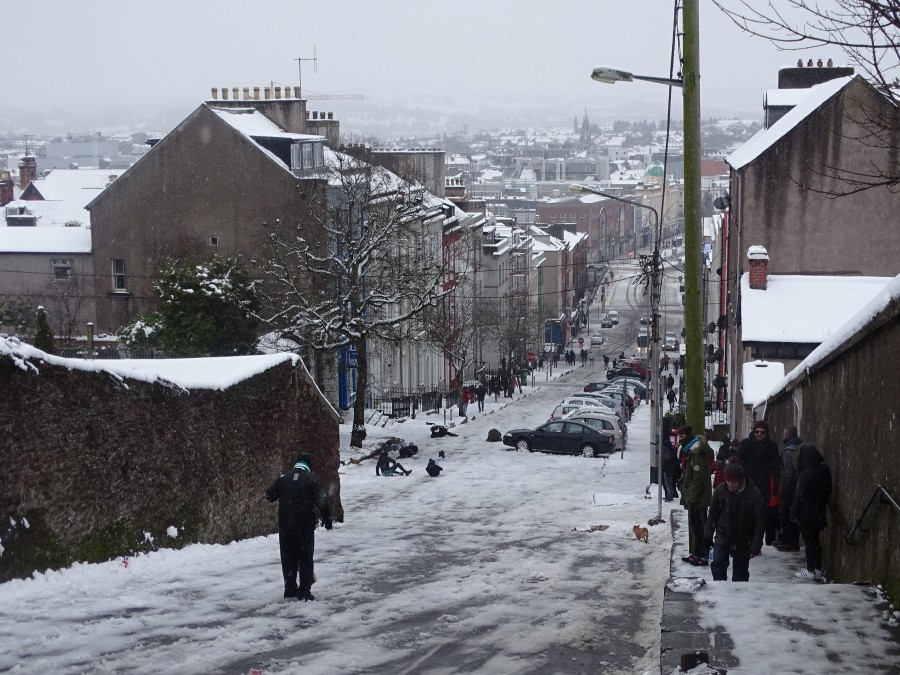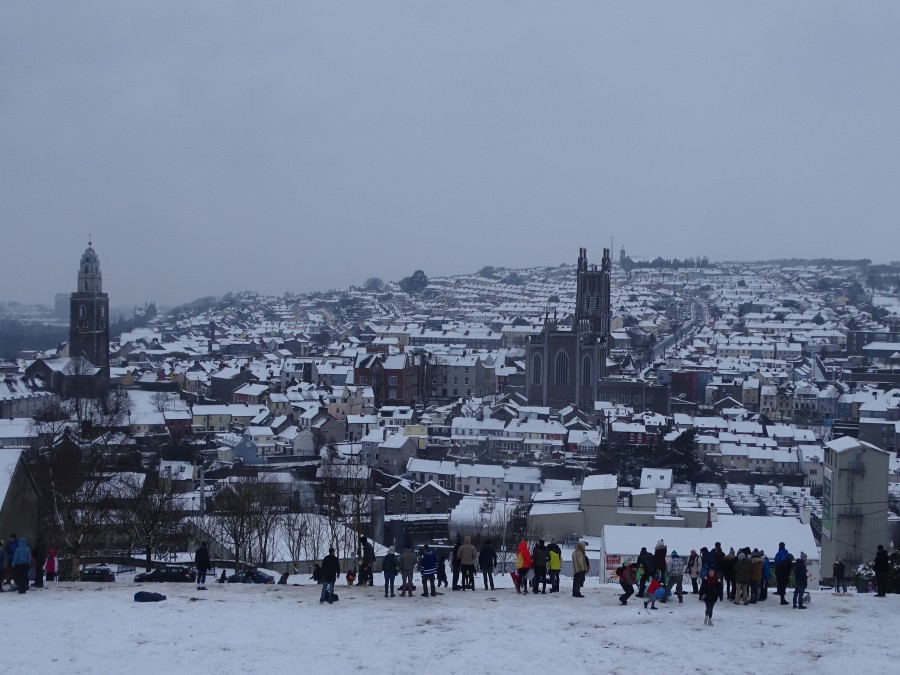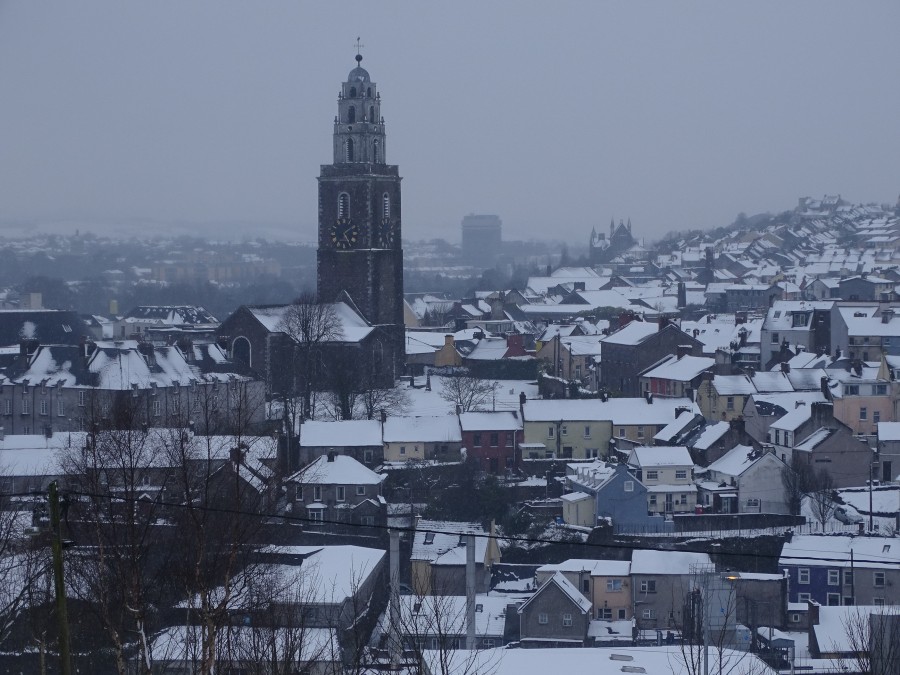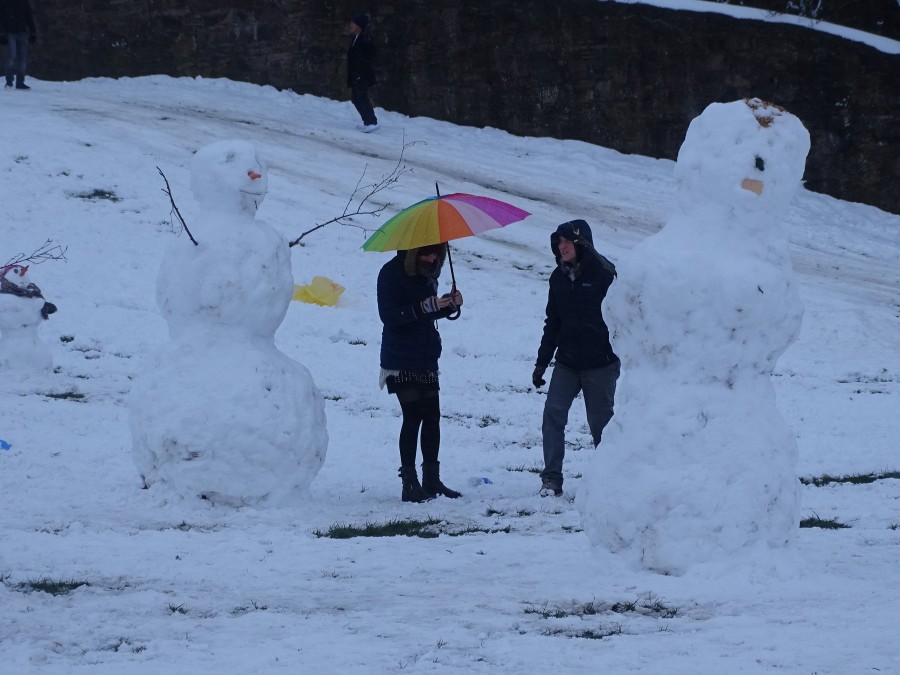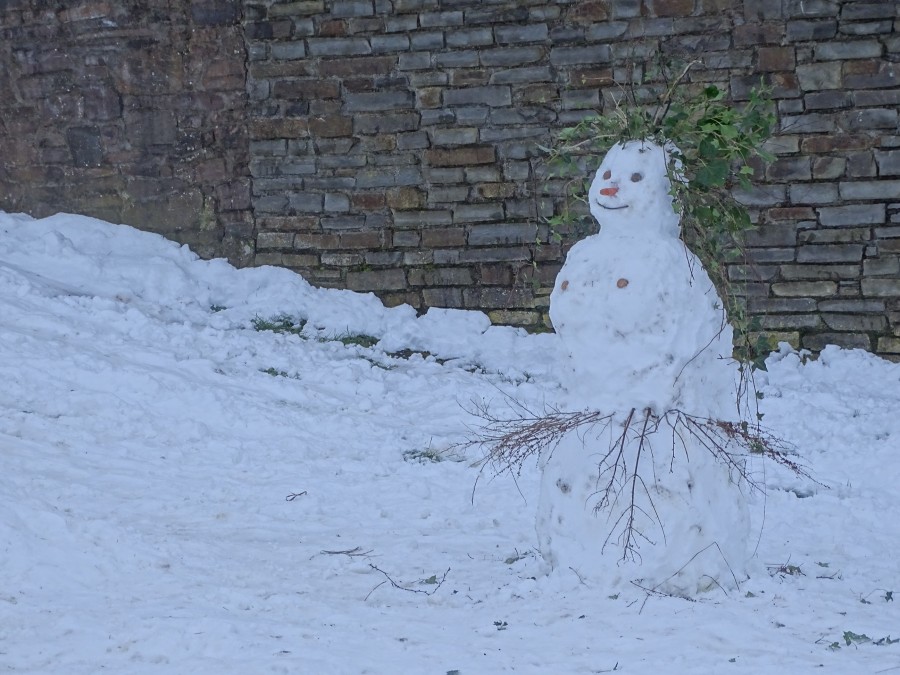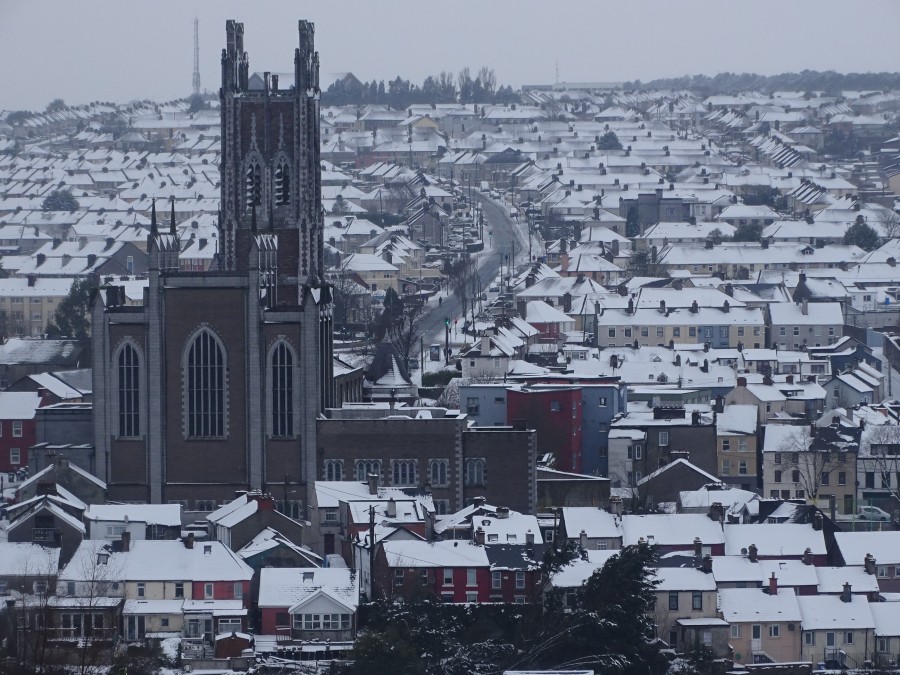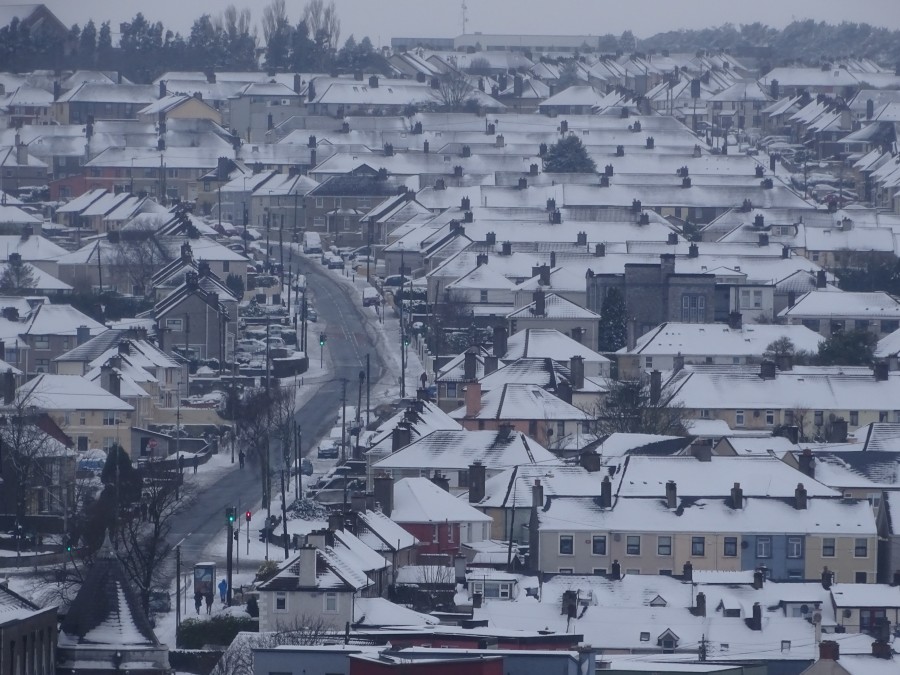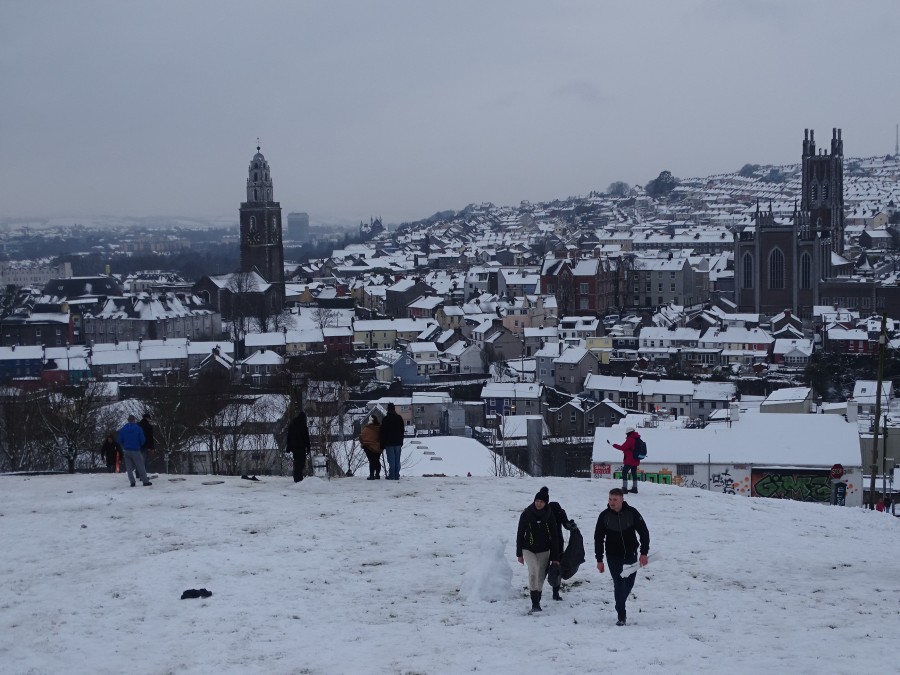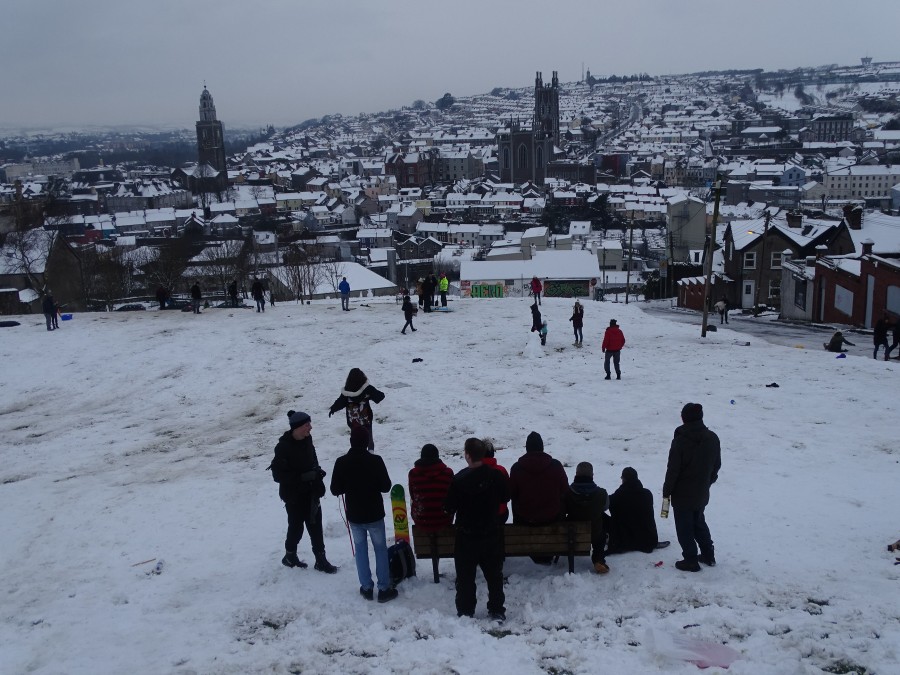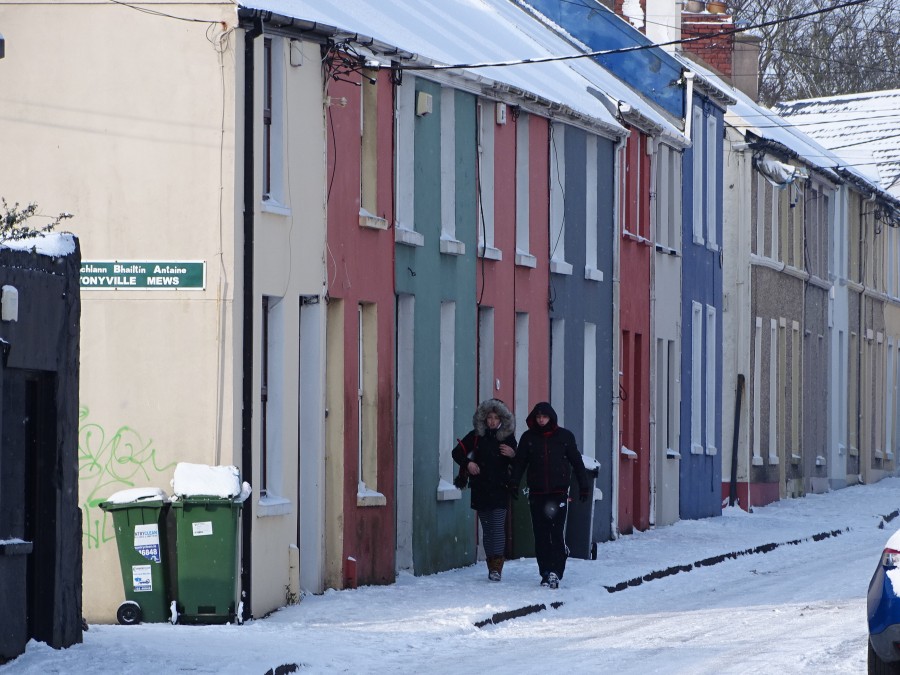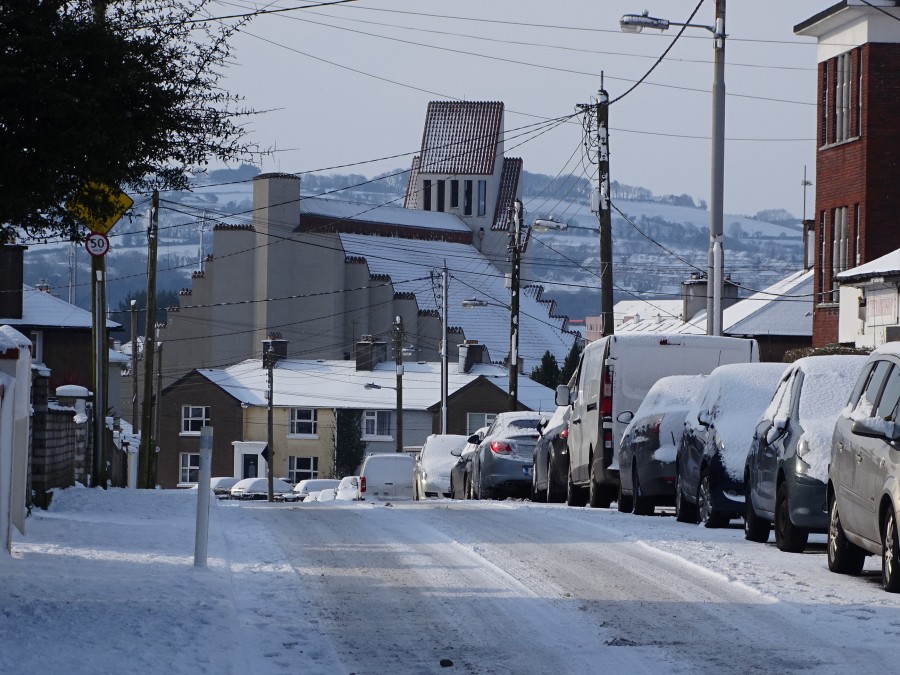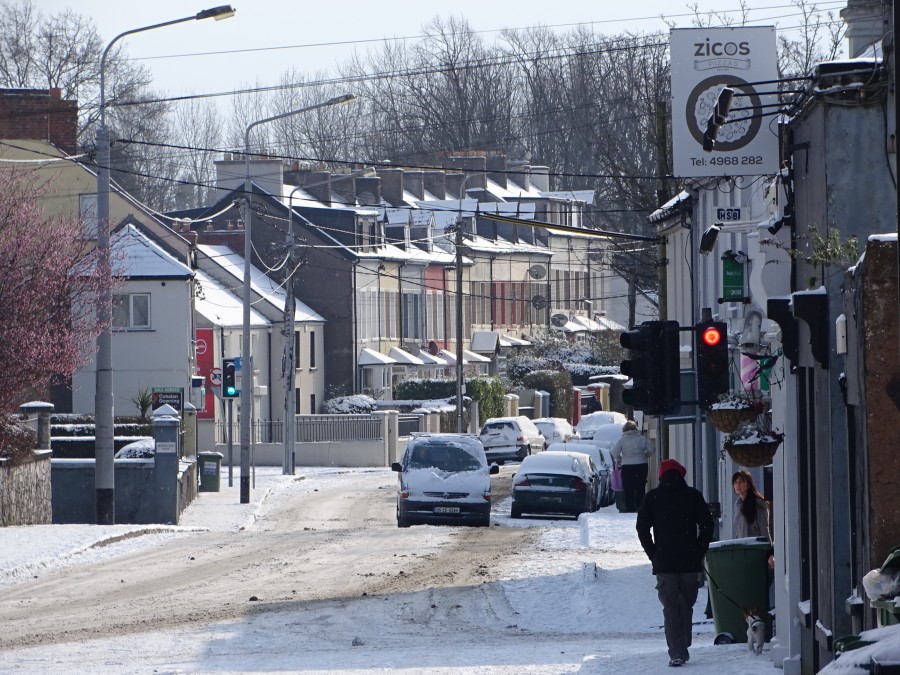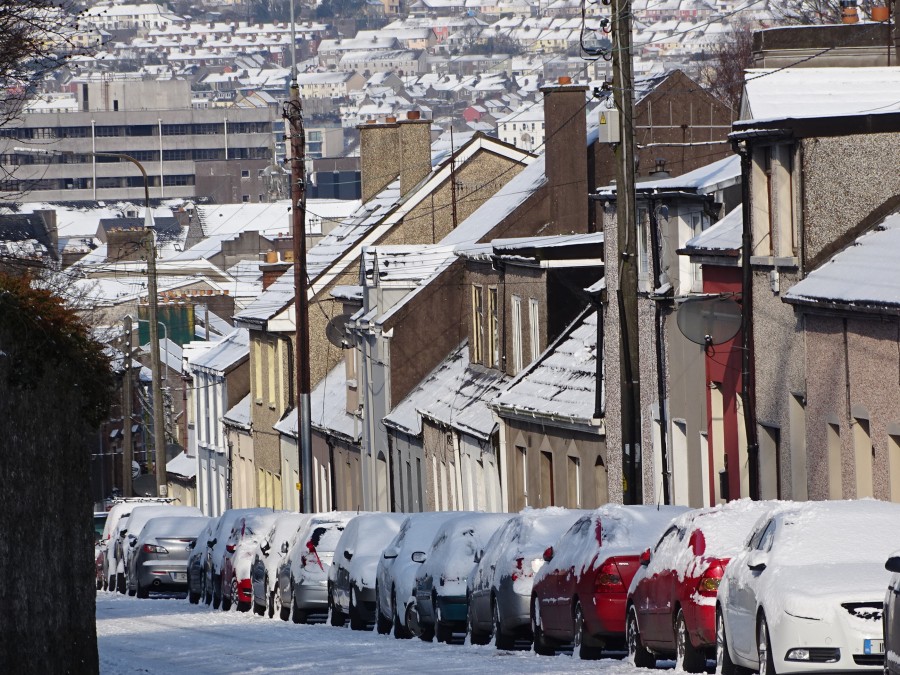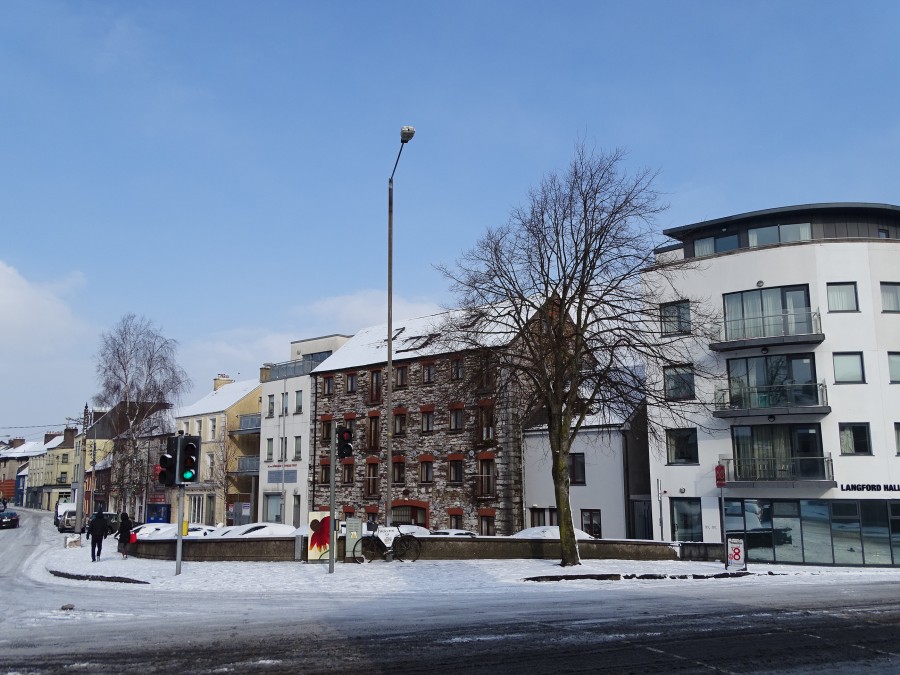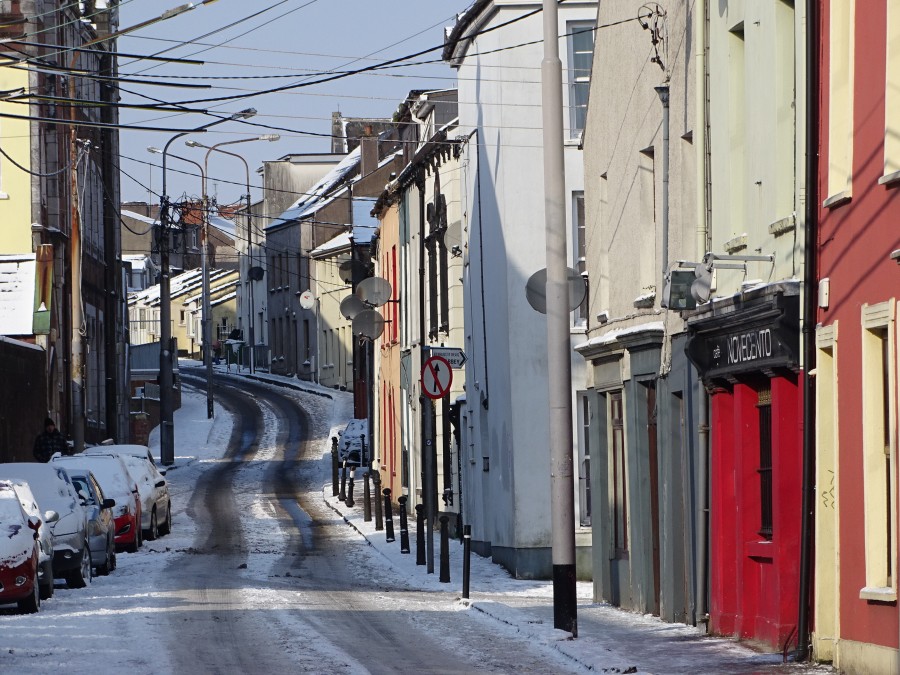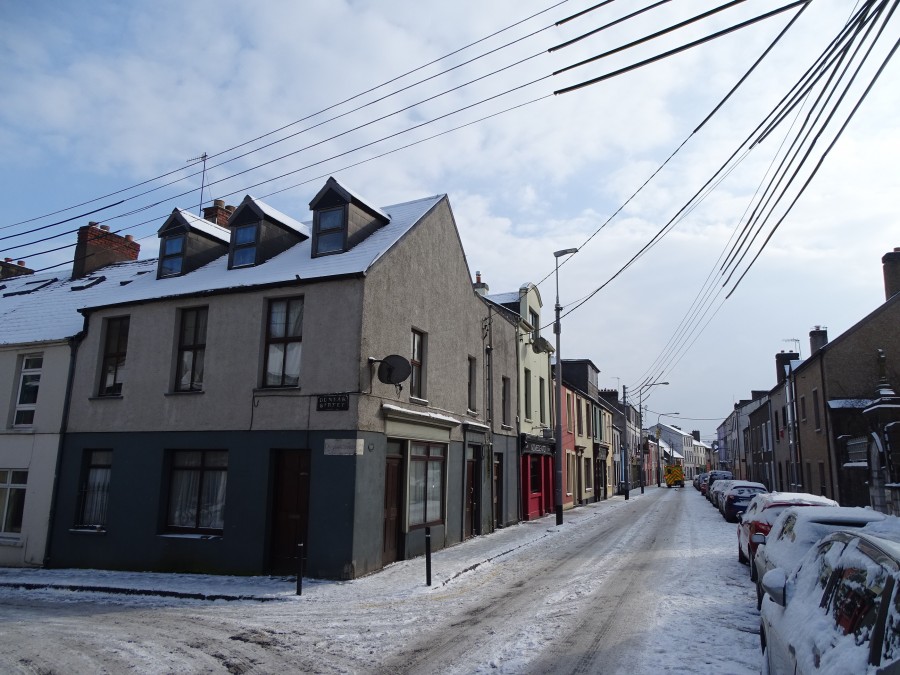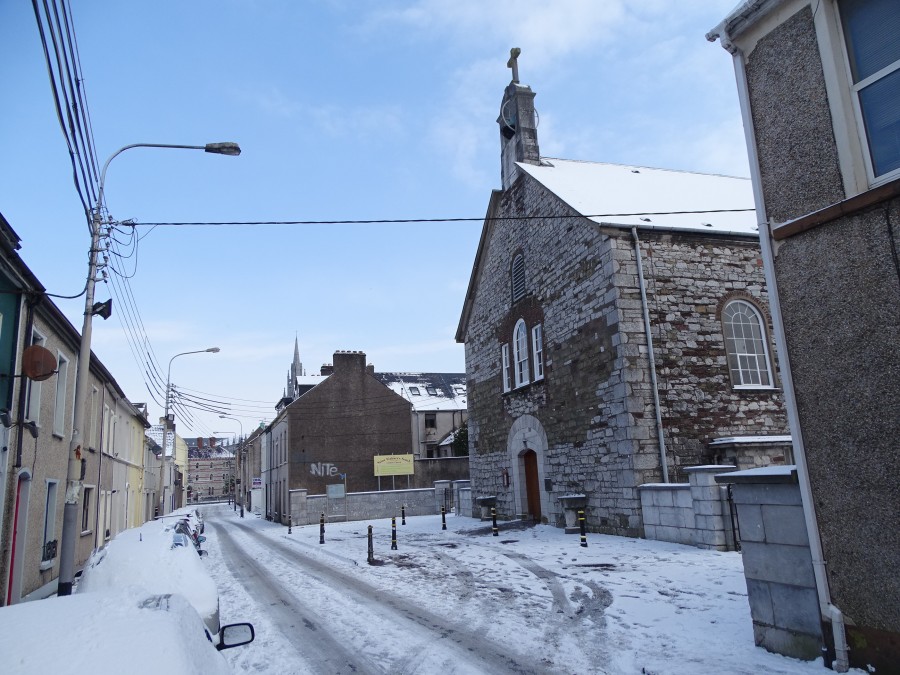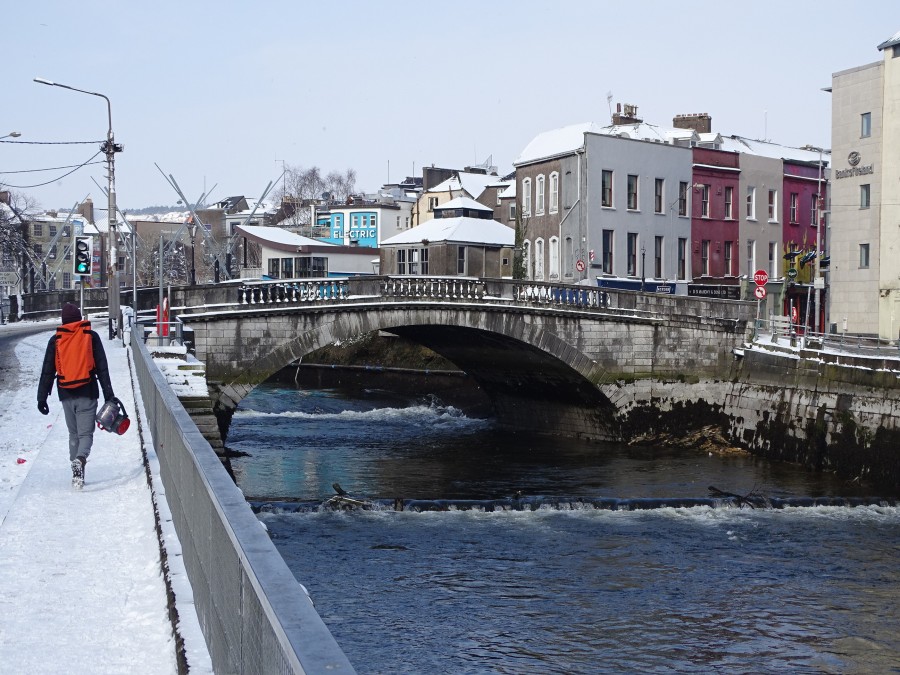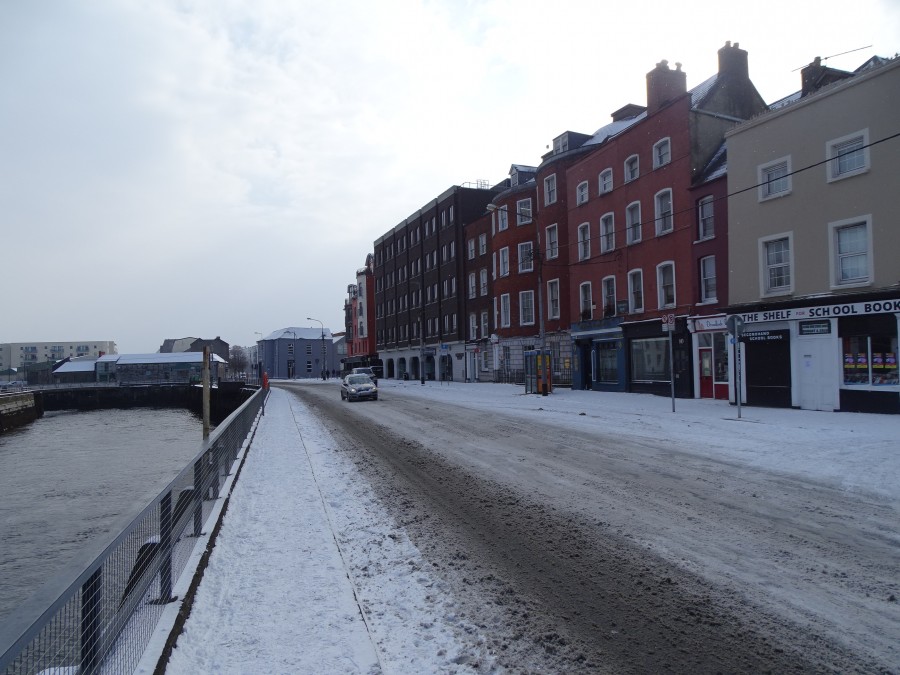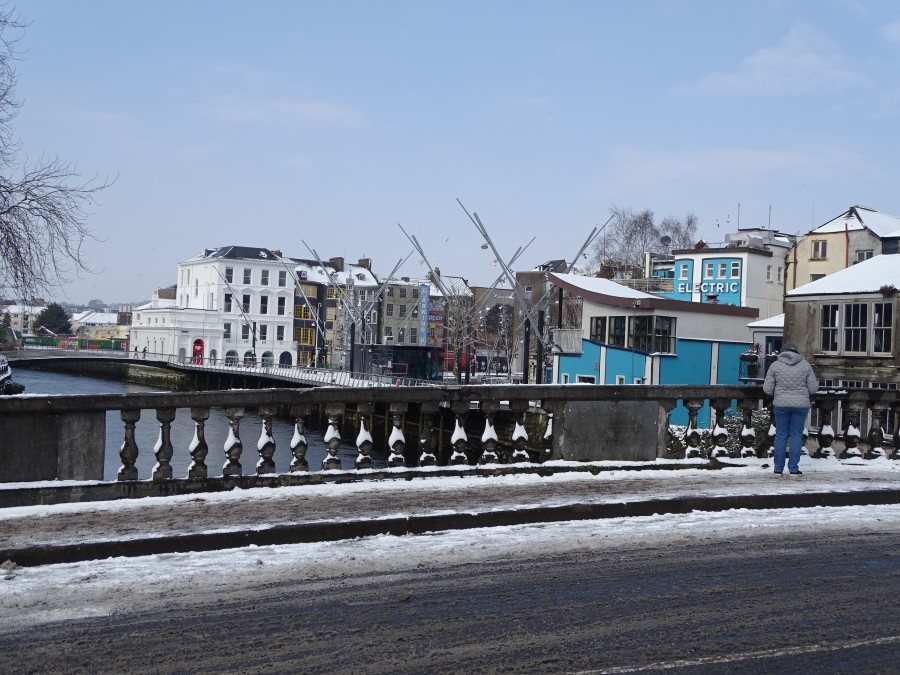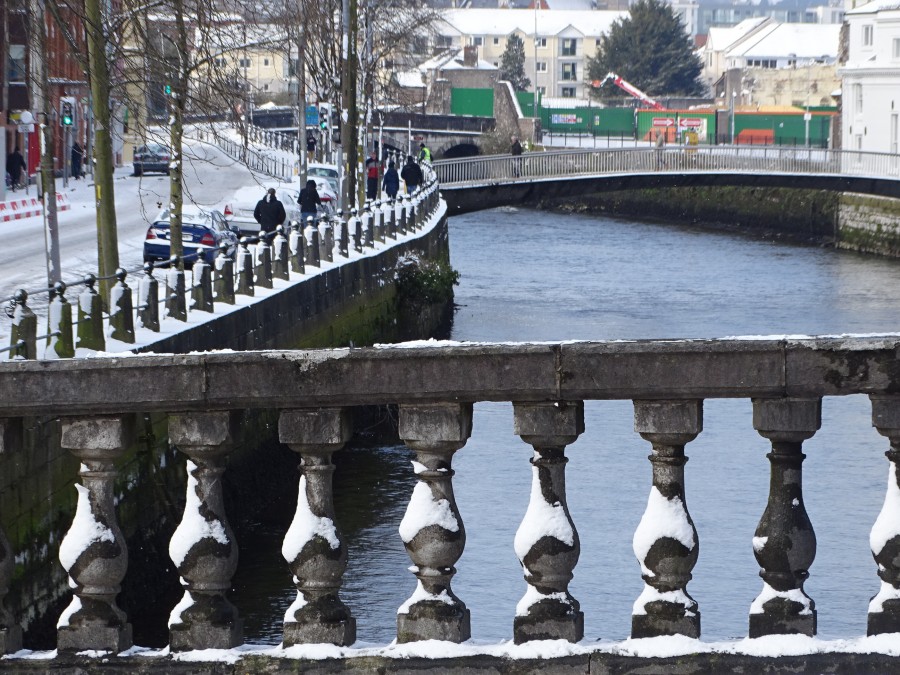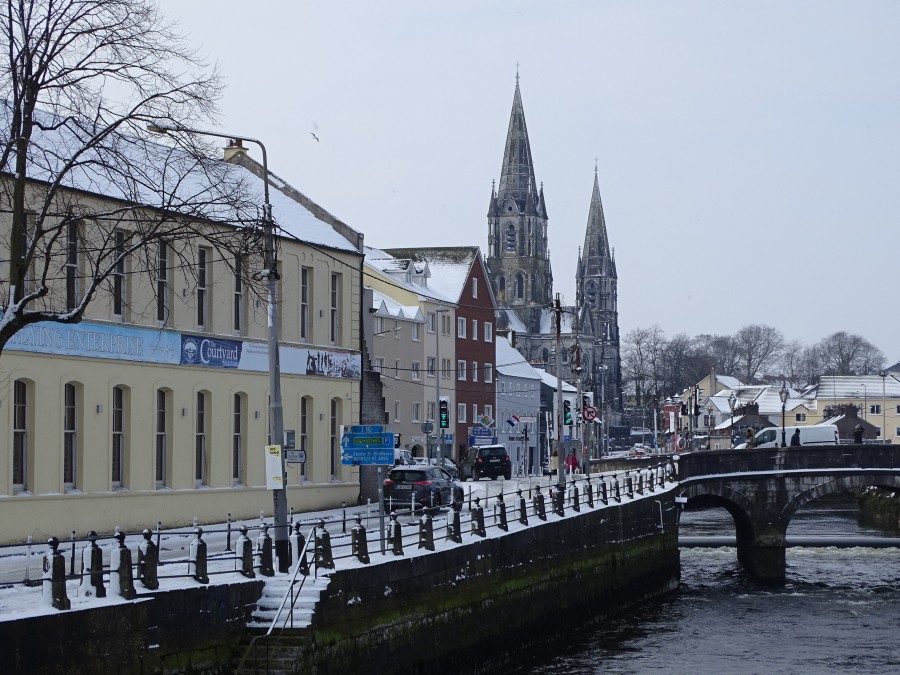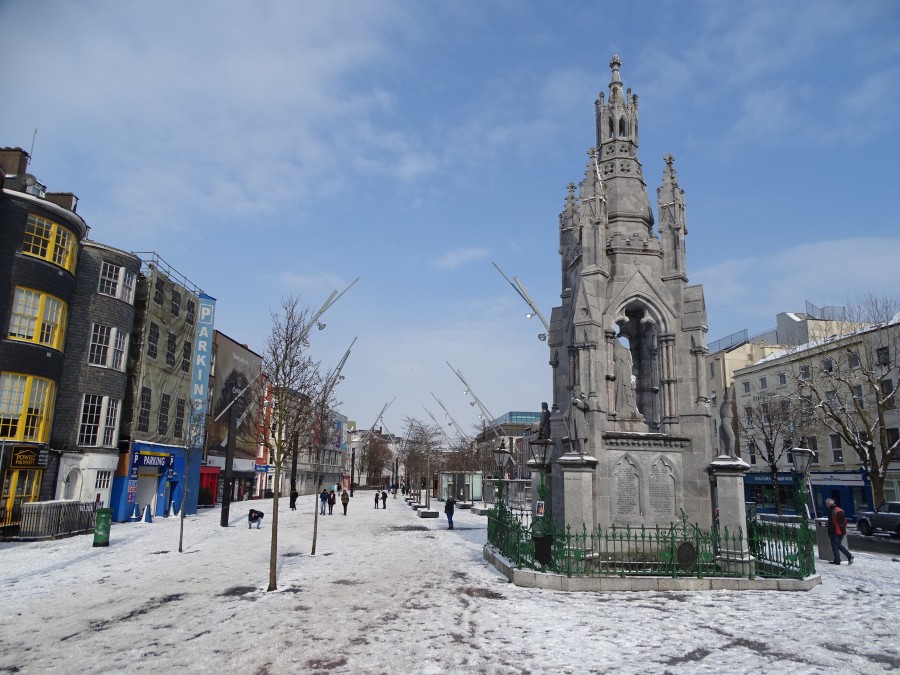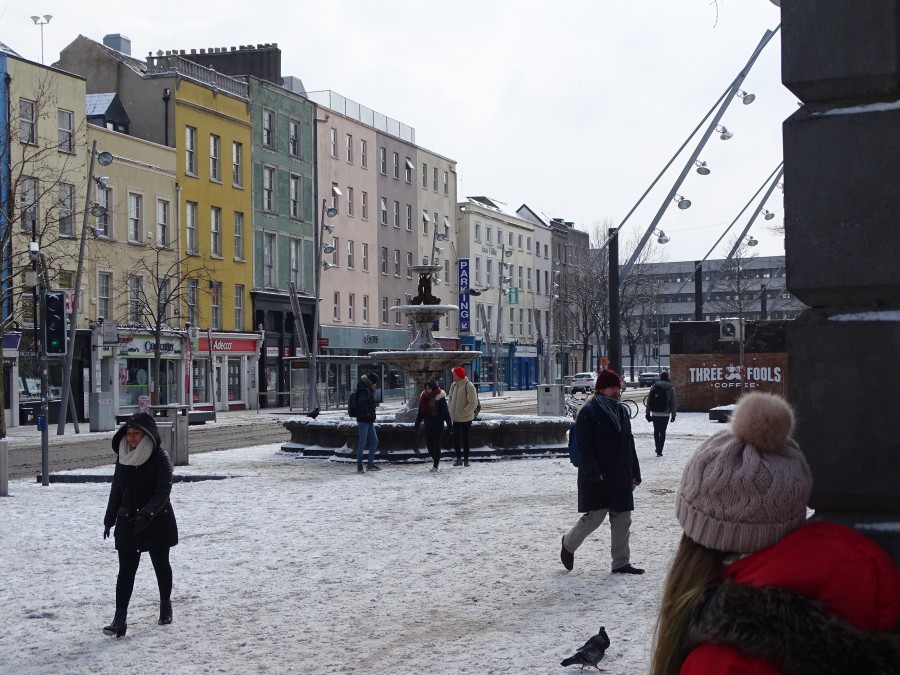Monthly Archives: March 2018
Kieran’s Our City, Our Town, 8 March 2018
Kieran’s Our City, Our Town Article,
Cork Independent, 8 March 2018
Stories from 1918: The Sinking of the SS Kenmare
The SS Kenmare, one of the fleet of the Cork Steam Packet Company, was torpedoed in the in the Irish Channel on Saturday, 2 March 1918, between Holyhead and Rockabill Light, on a voyage to Cork, under the command of Captain Peter Blacklock. Of the crew of 35 there were only six survivors. Amongst the 29 lives lost was Captain Blacklock, a native of Liverpool but who has resided for some years in Cork.
The Dublin correspondent of the Central News, in a graphic account of the sinking of the Kenmare, noted that the sinking occurred at seven o’clock on Saturday evening, and was without warning. Many of the men were in their bunks at the time, and were awakened by a loud explosion, which almost shattered the vessel. Rushing quickly on deck, they found the vessel awash. Only one small lifeboat, which was not lashed got clear. Its three occupants succeeded in rescuing some men from the water. Owing to the wreckage, they were unable to get to everyone, who were shouting for help. After ten minutes the distressing cries died away, and the survivors in the small boat drifted for twelve hours before being picked up. They were scantily clad and suffered terribly from the cold. Though all the survivors believed the sinking was caused by a submarine, none of them saw an enemy craft or the wake of a torpedo. The vessel appeared to have been struck amidships and sank in about a minute after the explosion.
In a media interview, crewman Tim O’Brien, of Cork, believed the ship was torpedoed. He was in his bunk at the time, in the steerage over the propeller, and was thrown by the force of the explosion some yards. The lights went out immediately. Four other firemen were sleeping in the room. There was some confusion in the darkness but he succeeded in a getting a flash lamp and his lifebelt and made for the deck followed by James Barry. When Tim got on the deck the ship was sinking fast. As with Mr Evans he got into one of the lifeboats and floated off the ship. As they were leaving the ship they grabbed another crewman and pulled him into the boat. At this time the captain was on the deck shouting instructions as to the lowering of the boats. After leaving the sinking ship they rescued the carpenter and a gunner from the water.
Meanwhile 25 of the crew had put off in a boat, which became upturned and from which only one man, James Wright was rescued. He was found with his head through the bottom of the boat, and rescued him with great difficulty, he being powerless to assist, as one of his arms was broken. They remained in the vicinity for a quarter of an hour in the hope of picking up other men. At about seven o’clock in the morning the survivors were picked up by a small coaster. They were then nearly dead with the cold, the majority being only half-clad. Tim O’Brien was in his shirt and trousers. The night was very cold, and a heavy sea was running.
James Wright, Chief Steward, who had sustained a fractured arm and was badly bruised about the left eye, told how he was talking to Captain Blackpool in the latter’s cabin just before the vessel was struck. It was just twilight, and nobody saw the submarine. A terrific explosion was the first he knew of anything happening. The SS Kenmare immediately took a big list and commenced to go down by the stern. In a minute and a half or two minutes at the most the ship had disappeared, and he was struggling in the water. When he and the captain realised what had happened they both rushed out on this deck and lowered one of the boats. This was upturned by the suction of the sinking vessel, and they were all thrown into the sea.
Heart-rending scenes were witnessed at the offices of the Steampacket Company on Penrose Quay, when relatives of members of the crew formed a constant stream of callers to ascertain if any news was to hand. Among the earlier visitors was the daughter of Captain Blacklock who was not among the survivors.
Relatives of nearly all the members of the crew visited the offices, and when it was revealed that only six out of thirty-five were saved there was much shock and devastation. Amongst those saved was Mr Barry – the oldest person aboard, and possibly the oldest man sailing in the company’s service. Amongst those missing was the Chief Engineer, Mr Thomas Murphy, the son of Mr Murphy, Woodland View. Strangely enough when in a different service Thomas’s ship was torpedoed, and though that vessel carried a very large crew they were nearly all saved. He had been sailing in the SS Kenmare for some little time back relieving a Mr O’Sullivan, Knockrea Terrace Blackrock Road. The Quartermaster, Geoffrey Grant who resided at Hibernian Buildings, who with his nephew, Mr Moore were also amongst the missing. Mr Grant was the father of five children, and four years earlier he had buried his wife.
Captions:
936a. SS Kenmare, c.1918 (source: Cork City Library)
936b. Captain Peter Blacklock (source: Cork City Library)
EU Commission to share best practice in Cork
Officials of the Regional Policy Directorate General of the European Commission are to come to Cork to Cork City Hall for a one-day workshop on EU funding initiatives for cities and towns, on Tuesday 27 March. The invite was sent by Cllr Kieran McCarthy, who is an Irish delegate member of the European Committee of the Regions and is currently working as a rapporteur on an assessment of the EU Urban Agenda. Cork City Council and the Southern Regional Assembly are hosting the event and invites have been sent to each local authority in the Republic. Attendance is free and open to the public. Registration and agenda is online on www.southernassembly.ie.
An Urban Development Network Workshop aims to exchange ideas and find solutions to common challenges in implementing sustainable urban development strategies in Ireland and to learn more about the Urban Innovative Actions and what cities in other Member States are doing in addressing these challenges.
Cllr McCarthy noted: “there is not a meeting goes by in Cork City Council whereby the need for funding for larger projects is discussed. The meeting aims to share EU funding initiatives and share practice especially from the Urban Innovative Actions.
“The workshop is open to the cities and towns in Ireland implementing sustainable urban development and cities/towns with an interest in the Urban Innovative Actions. Organisations active in urban development as well as ERDF/ESF Managing Authorities are also welcome to attend. I wish to also reach out to Chambers of Commerce and Colleges”.
All participants will have the possibility to be actively involved in the discussion and solve technical questions on potential projects with experts.
The workshop will be closed with an Urban Conversation framed within the Committee of the Regions’ initiative entitled “Reflecting on Europe”. Citizens will have the opportunity to dialogue with European institutional representatives on the current challenges that the EU face.
“Regions such as Cork cannot afford to underestimate the effects of Brexit on the local and regional economy. many sectors are affected such as tourism, cross-Channel transport, UK residents settled in adjacent countries, trade exchange with the UK in fishing industry, agriculture and agribusiness. The list of effects is long. This day long workshop is also an opportunity to lay the challenges of smaller cities such as Cork and smaller towns on the table of the Regional Policy unit of the European Union, and to make sure we are not forgotten about as talks begin on the EU budget beyond 2019 and 2020”, noted Cllr Kieran McCarthy.
Irish Heart, Coventry Home Exhibition set to launch, Friday 9 March 2018
To celebrate the 60th anniversary of Cork City’s twinning with Coventry, Cork City Council has part funded a new exhibition telling some of the experiences of Cork and Irish people in Coventry over many decades. ‘Irish Heart, Coventry Home’ will be held at the Herbert Art Gallery, Coventry for one month from Friday 9 March 2018 when the exhibition launches at 8pm, after 12 months of research from the Coventry Irish Society. This evening event is open to the public and will include well-known Irish musicians, actors, activities and storytelling in the medieval undercroft. It is hoped to bring the Exhibition to Cork at some point this year.
Cllr Kieran McCarthy, represented Cork’s involvement in the project and helped with overseeing the creation of the project in its early stages. He noted that telling the story of Ireland’s diaspora is very important; “The narrative of Irish history and emigration sometimes stops at our ports and airports. There is a continuing and large job of work to continue to document l the story of what happened to Irish people abroad, and then incorporate it into our school curriculum and the popular narrative stream on Irish history”.
“The new exhibition tells the true experience of Irish families settling in Coventry over three decades from their point of view. Sixty-five people were interviewed as part of the project, including many who moved between 1940 and 1970. These interviewees will feature in a 30-minute documentary put together by the society, who spent hundreds of hours with interviewees to understand their journey to Coventry. It will also see a diverse collection of photographs and personal items which will go up on display to form what should be an enlightening and entertaining exhibition”.
The ‘Irish Heart, Coventry Home’ project has been supported by the UK Heritage Lottery Fund as well as Cork City Council, the Deeley Group and Coventry City Council with a four-strong steering group helping bring the exhibition together alongside Project Officer Ciaran Davis.
Simon McCarthy, Manager of the Coventry Irish Society, said: “We are incredibly excited to be able to tell the fascinating story of so many people who have contributed massively to the culture, infrastructure and history of Coventry after moving from Ireland”.
“The most successful element of the project has been the breadth of our interviewees. We have spoken to a wide variety of people including poets, builders, teachers, musicians and more. Furthermore, we are pleased to have involved so many female interviewees. Women are sometimes left out of narratives of Irish migration, even though they came to England in significant numbers”.
Francis Ranford, Cultural and Creative Director at Herbert Art Gallery & Museum, said “We are passionate about showing exhibitions which reflect the vibrant and diverse history of Coventry”.
For more information about the Irish Heart, Coventry Home exhibition visit www.ohs.org.uk/irish-heart-coventry-home
For more information about the Coventry Irish Society visit www.facebook.com/coventry.irish or www.coventryirishsociety.co.uk
Deputy Lord Mayor, Cllr Kieran McCarthy, Launch of Volvo Week, 5 March 2018
Speech Notes, Deputising for the Lord Mayor,
Cllr Kieran McCarthy
The Edge of Memory
The Acupuncture of Landscape:
On behalf of the Lord Mayor, many thanks for the invitation to come and chat to you this afternoon for the launch of Volvo Week.
In the last few days our localities looked different – the familiar became the foreign – for many of us our homes, our neighbourhoods, our locales, our city, our town, our region felt different. It’s as if someone flipped a switch and turned the focus on our view to a different one – we admired different contours, we could not drive, we walked differently, we were excited, we remembered past times, we worried about missed work deadlines – in a sense we were stranded physically and perhaps mentally in a different looking world. Our surrounding snow-laiden landscape carved and sped up the creation of new perceptions.
But on any given day the landscape has the power to stop, impress, make one question, create an openness, wonder, dream, remember, be disturbed, explore and not forget – a whole series of emotions – acupuncture pins of an emotional sorts, which evolve who we are, our place in our world, our sense of place, our story, our culture, our identity.
The Land of Cork Harbour:
If landscape has these emotional acupunctural powers, a landscape such as Cork Harbour, of which we are just in one of its most historic quadrants, is a rich haven to try to understand our sense of place, our story, our culture, our identity.
Being the setting for Volvo Week, the second largest natural harbour in the world brings a focus and energy with which Cork Harbour has always been open to. The ebb and flow of the tide through the ages has carved a unique landscape of cliffs, sand and gravel beaches exposing an underlining geology of limestone and sandstone. Invigorating this landscape are a multitude of archaeological monuments inscribing it from different ages.
Colourful villages provide different textures and cultural landscapes in a sort of cul-de-sac environment where roads end at harbours, at car parks near coastal cliff faces, and quaysides – where signs warn the visitor of the edge. The villages are scattered around the edges of the harbour, each with their own unique history, all connect and add in someway to the greatness of this harbour.
In many areas, one can get the feeling you are at the ‘edge of memory’. There are the ruins of old structures, which the tide erodes away at. One can sense that a memory is about to physically and culturally get carried away by the sea and the fluidity of places-making shifts again. And that’s just the land part. Not everyone gets to view the harbour in a more holistic way from the water.
The Watery Landscape:
Through boating and sailing, we get to feel the harbour’s watery landscape – a more shift-shaping entity with a wide ranging juxtaposition of qualities – calm to rough, clear to foggy, playful light to darkness, dreamlike to fantasy – where stories almost stray between the ripples of the deep waters beyond – that if you stare long enough your mind creates its own scenes of place or re-imagines one’s life from days of yore.
The power of place and memory are ever present – the setting, the water, the past, the present, all colliding, at any one time knocking our sense of place.
And with all these emotional acupuncture pins- this box of ideas about place and memory, it is perhaps that today we return here to Haulbowline – to the first home of the Royal Cork Yacht Club (RCYC), which has successfully over near three hundred years played with the land and water element of the harbour, and defines joined up thinking on the holistic cultural use of the harbour.
The Historic Royal Cork Yacht Club:
The Royal Cork Yacht Club traces its origins back to 1720, a time when the City of Cork was taking down the limitations of being a walled town, and a time when iconic structures such as St Anne’s Shandon was being constructed in 1722 as well as aspects such as the Mardyke being laid out in 1719. Its story is richly laid out in Alicia’s St Ledger’s thick book of histories, illustrations and pictures. It began with the establishment, by six worthies of the time, of the Water Club of the Harbour of Cork, headquartered in the castle of Haulbowline Island – headed up by the 24-year-old William O’Brien, the 4th Earl of Inchiquin, and probably the first Admiral of the club. Membership was limited to 25 and strict protocol governed all the club’s activities, both afloat and ashore.
Racing proper did not begin until 1787 and, in the years prior to that, the club’s members contented themselves with sailing in a rather leisurely fashion around the harbour once a month from April to September on the spring tide.
Fast forward almost a hundred years from 1720 to circa 1813, a barracks to accommodate three officers and sixty men, two storehouses, a gun carriage yard, smithy and carpenters’ workshop and other installations were constructed.
Circa 1820, on the naval side of the island (i.e. the eastern side), a large victualling yard containing six large storehouses, living quarters for the supply staff and medical officers, houses for the Chief Surgeon, the coopers and other workshops were erected. The island was extended by 4.5 acres of reclaimed land in order to construct the flat wharfage area. The building contractor was Mrs Deane of Cork, who shortly afterwards was involved in building Cork City Gaol.
All followed by the creation of Rocky Island as an ammunition store and Spike Island as a convict prison.
Towards EU Maritime Day:
These stories and a multitude of others such as in Camden Fort Meagher, we are telling a lot more. Focus in the harbour in the last few years has been more and more on the power of the story of the harbour. That such a story is a jewel that we should try to understand and promote more. The RCYC is central to the story. Our harbour heritage sites capture a piece of life. And both Cork City Council and Cork County Council are parts of the pieces in helping that process. Cork City Council looks forward to hosting EU Maritime Day in 2020.
Volvo Week also creates new ways of seeing places, create ways of expressing ideas about the idea of place and create new ways of place making.
Perhaps for us the participant, the week presents a set of lenses or tools perhaps to decode, discover, recognise, reveal, synthesise, communicate, move forward and explore our cultural heritage, the environment, society and the very essence of identity-making.
Today’s Society also needs all of those traits and emotional acupunctural pins in abundance.
I wish everyone involved in this week well; I would like to thank Volvo and all the sponsors, the RCYC, the people of the harbour region well in hosting this enormous event.
I look forward to engaging with different aspects of the week and I look forward to the commemorative events of 2020.
Go raibh maith agaibh.
Severe Weather Update, Cork City Council
PRESS RELEASE – SEVERE WEATHER UPDATE
3 March 2018 – 08.44
Cork City Council’s Crisis Management Team reconvened earlier this morning. There was an improvement in weather conditions overnight and snowfall in the city has now ceased. There may be some snow showers throughout the morning.
This morning’s high tide passed without major incident, and some minor levels of water ponding occurred in low lying city-center areas.
A Met Eireann Orange Weather Warning remains in place for Cork. The City Council is warning that there will be widespread treacherous surfaces due to ice and lying snow. Rain will begin to spread from the south today and this will start the melting process with potential flooding.
Members of the public are being requested to continue to be conscious of the changing weather conditions today, and exercise a high level of caution caution when travelling.
The water network is currently experiencing some difficulties due high demand and the ongoing occurrence of water leaks. Whilst these difficulties are being assessed, the City Council is requesting the public:
· Not to leave taps running
· To restrict water usage to essential purposes only, and
· To check vacant properties for water leaks, and to address any leaks occurring ( Again, people are requested to exercise extreme caution if travelling)
The situation will be kept under review and further updates will issue throughout the day.
Normal City Council services / facilities will begin to return to normal levels today.
ENDS
Snow on St Patrick’s Hill, 2 March 2018
Today’s uphill climb on Cork’s hill of hills in the snow – St Patrick’s Hill – here for a few hours there were snowball fights, snowmen making, sledding on bags and cardboard – set against the backdrop of Shandon, North Cathedral, steps, steeples, lanes, curving avenues, railings, inclines, red brick, sandstone ridges, and young and old, neighbours, friends, visitors, strangers – all enjoying themselves 🙂
Severe Weather Alert, Cork City Council
PRESS RELEASE – Treacherous Driving Conditions Continue
2 March 2018, 12.40pm
Cork City Council’s Emergency Services continue to respond today to the severe weather conditions that have hit the region since early morning.
An Garda Síochana has advised the City Council that conditions across the region have become increasingly treacherous and that the public are advised to stay of the roads unless absolutely necessary. If there is a need to make an essential journey, people are asked to exercise extreme caution.
Snow is continuing to fall and conditions locally will continue to remain very poor. The City Council is echoing the advice of an Garda Síochana, in relation to driving conditions. Cork City Council is urging the public to avoid making unnecessary journeys and to stay indoors until severe weather conditions have improved. City Council salt and gritting crews are working throughout the day treating priority roads and snow ploughs have been deployed to assist with the road treatment operations.
In this regard weather and atmospheric conditions will remain under review and a further update will issue later today.
Cork City Council’s Crisis Management Team will remain in place throughout the day and will monitoring on-going poor weather conditions. A further update will issue later today.
ENDS
Severe Weather Update, Cork City Council, 2 March 2018
PRESS RELEASE – SEVERE WEATHER UPDATE
2 March 2018, 8.45am
Cork City Council’s Crisis Management Team has reconvened this morning and is monitoring on-going poor weather conditions.
The City Council Emergency Services remained in position overnight to respond to emergency situations. No serious incidents were reported overnight.
Snow is continuing to fall and conditions locally are very poor, with treacherous driving conditions. Because of these local conditions, Cork City Council is advising the public to avoid making unnecessary journeys. If there is a need to make an essential journey, people are asked to exercise extreme caution.
City council salt and gritting crews are working this morning to treat priority roads and snow ploughs have been deployed to assist with the road treatment operations.
High tide passed this morning without serious incident. The City Council advises that the risk of tidal flooding in low-lying areas of the city will be greatest on Saturday morning (high tide at 06.30). In this regard weather and atmospheric conditions will remain under review and a further update will issue later today.
ENDS
